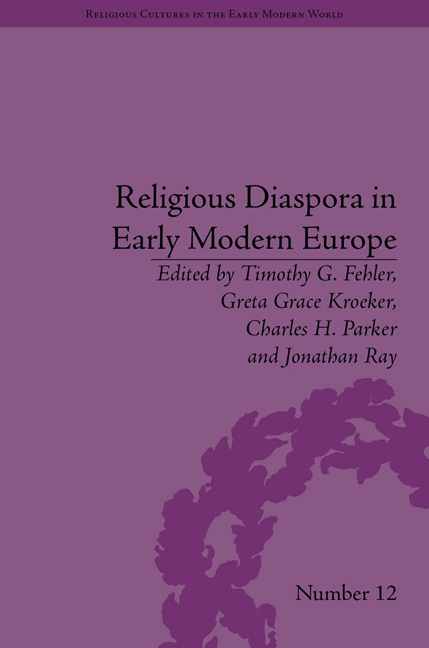Book contents
- Frontmatter
- CONTENTS
- Acknowledgements
- List of Contributors
- List of Figures
- Introduction
- Part I Tactics for Inclusion
- 1 Trade in Tolerance: The Portuguese New Christians of Antwerp, 1530–50
- 2 Swimming against the Tide: The Entry of Jews in Spain. Religious Mobility, Social Control and Integration at the End of the Ancien Régime
- 3 Populating a ‘Nest of Pirates, Murtherers, etc.’: Tuscan Immigration Policy and Ragion di Stato in the Free Port of Livorno
- Part II Programmes of Restoration
- Part III Methods of Coping
- Notes
- Index
2 - Swimming against the Tide: The Entry of Jews in Spain. Religious Mobility, Social Control and Integration at the End of the Ancien Régime
from Part I - Tactics for Inclusion
- Frontmatter
- CONTENTS
- Acknowledgements
- List of Contributors
- List of Figures
- Introduction
- Part I Tactics for Inclusion
- 1 Trade in Tolerance: The Portuguese New Christians of Antwerp, 1530–50
- 2 Swimming against the Tide: The Entry of Jews in Spain. Religious Mobility, Social Control and Integration at the End of the Ancien Régime
- 3 Populating a ‘Nest of Pirates, Murtherers, etc.’: Tuscan Immigration Policy and Ragion di Stato in the Free Port of Livorno
- Part II Programmes of Restoration
- Part III Methods of Coping
- Notes
- Index
Summary
In early 1752 a young Jewish couple from the French faubourg of Saint-Esprit, Bayonne, entered the Iberian Peninsula expressing their desire to renounce their faith and convert to Catholicism. They were Sara Pereyra, eighteen years of age, and Jacob Henriquez Zamora, who was twenty-one years old. They both declared that they had been born and raised as Jews, and they had come to Spain not only to become Catholics but also to be married in this faith.
Their situation could be initially presented as another case of European Jews or conversos who at a certain point of their lives decided to move to Catholic Spain or Portugal, similar to those already magnificently studied by scholars such as Yosef Kaplan, David Graizbord and Natalia Muchnik, among others. However, the records of the Spanish Inquisition evidence a complicated web of interests tangling with the intentions of those two young Jews, which makes their case particularly interesting – a web of interests that includes the Jewish community where the couple were from, the Catholic community in the south of France, and Spanish society's civil and ecclesiastical authorities, the Inquisition included.
In fact, Sara and Jacob's experience – the circumstances surrounding their decision and the path followed by the young exiles in order to achieve their aims – provides a compelling case study.
- Type
- Chapter
- Information
- Religious Diaspora in Early Modern EuropeStrategies of Exile, pp. 19 - 30Publisher: Pickering & ChattoFirst published in: 2014

